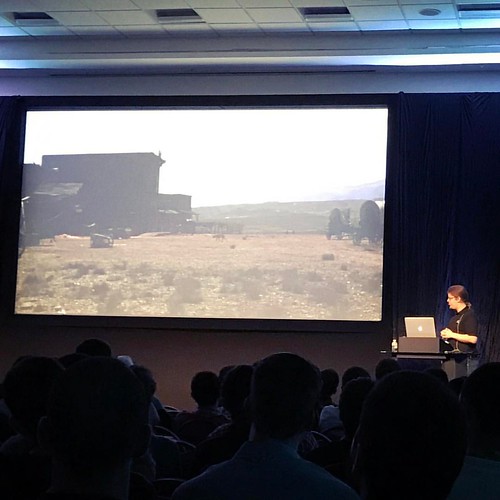all RNAs crucial for development and mechanisms of inheritance. Presently, it may only be speculated in the event the piRNA complex regulates the genome at the degree of DNA or histones, or at a posttranscriptional level. Interestingly, QDE-3, the RECQ1 homolog in Neurospora crassa, has also been implicated in gene silencing [59]. The qde-3 mutant was identified to be hypersensitive to several different DNA mutagens and exhibit improved mutability and substantial chromosomal deletions [602], implicating a ARS-853 broader role from the Neurospora RECQ1 homolog within the DNA harm response and chromosomal stability. Our cellular research implicate a distinctive and important role of human RECQ1 in genome homeostasis as well. Further operate is required to understand RECQ1-piRNA genome defense association. Clearly, RECQ1 has turn into the latest member of the RecQ helicase family members with important biological functions through its involvement in the DNA damage response and fundamental processes of chromosomal nucleic acid metabolism.Ovarian cancer would be the second most typical gynecologic cancer in the United states affecting roughly 22,000 women each  year causing an estimated 15,200 deaths [1]. 10877822” Cancer is really a genetic disorder arising in the accumulation of somatic mutations in genes involved in critical cellular pathways. These mutations usually lead to proteins which exhibit their oncogenic impact by altering signaling via crucial transduction networks, or in haploinsufficiency of important tumor suppressor proteins. Understanding the genetic basis of ovarian cancer has implications both for early detection, at the same time as for therapeutic intervention in this population of sufferers. Genes which have been discovered somatically mutated in ovarian cancer consist of KRAS [2], NRAS [2], PIK3CA [5], PTEN [5,10,11], TP53 [5,12,13] and BRAF [2]. B-Raf, the protein product of BRAF, is actually a serine/ threonine protein kinase and also the 1st within the mitogen-activated protein kinase (MAPK) cascade which can be among the list of quite a few downstream effector pathways of Ras. Extracellular stimuli results in the activation of Ras, which in turn activates Raf (A-Raf, B-Raf, and/or C-Raf-1). Raf then phosphorylates and activates MEK1 and/or MEK2 (MAPK kinase). MEK1 and MEK2 are threonine/ tyrosine kinases with both isoforms getting the capacity to phosphorylate and activate ERK1 and ERK2 (MAPK). ERK, when activated by MEK, has various cytosolic and nuclear substrates [14]. Aberrant upstream signaling resulting in hyperactivated ERK plays a important part within the pathogenesis and progression of about 30% of human cancers, such as ovarian cancer [15]. Consequently, this pathway has been an eye-catching target for the development of compact molecule inhibitors for the therapy of cancer [16].Genes comprising the MAPK pathway, BRAF, MEK1 and MEK2, had been systematically scanned for mutations in 15 ovarian cancer cell lines making use of bidirectional direct sequencing of all exons. 11118042” Prior reports have demonstrated that B-Raf is mutated in around 287% of low grade serous carcinomas [3,17]. With this info, our search was expanded to include MEK1 and MEK2, two genes together with BRAF, which we’ve got lately determined to be causal for cardio-facio-cutaneous (CFC) syndrome (MIM 115150), a several congenital anomaly syndrome whereby people have characteristic craniofacial dysmorphia, heart defects and ectodermal anomalies [18]. Interestingly, in contrast to germline mutations identified in CFC syndrome, no somatic mutations have ever been i
year causing an estimated 15,200 deaths [1]. 10877822” Cancer is really a genetic disorder arising in the accumulation of somatic mutations in genes involved in critical cellular pathways. These mutations usually lead to proteins which exhibit their oncogenic impact by altering signaling via crucial transduction networks, or in haploinsufficiency of important tumor suppressor proteins. Understanding the genetic basis of ovarian cancer has implications both for early detection, at the same time as for therapeutic intervention in this population of sufferers. Genes which have been discovered somatically mutated in ovarian cancer consist of KRAS [2], NRAS [2], PIK3CA [5], PTEN [5,10,11], TP53 [5,12,13] and BRAF [2]. B-Raf, the protein product of BRAF, is actually a serine/ threonine protein kinase and also the 1st within the mitogen-activated protein kinase (MAPK) cascade which can be among the list of quite a few downstream effector pathways of Ras. Extracellular stimuli results in the activation of Ras, which in turn activates Raf (A-Raf, B-Raf, and/or C-Raf-1). Raf then phosphorylates and activates MEK1 and/or MEK2 (MAPK kinase). MEK1 and MEK2 are threonine/ tyrosine kinases with both isoforms getting the capacity to phosphorylate and activate ERK1 and ERK2 (MAPK). ERK, when activated by MEK, has various cytosolic and nuclear substrates [14]. Aberrant upstream signaling resulting in hyperactivated ERK plays a important part within the pathogenesis and progression of about 30% of human cancers, such as ovarian cancer [15]. Consequently, this pathway has been an eye-catching target for the development of compact molecule inhibitors for the therapy of cancer [16].Genes comprising the MAPK pathway, BRAF, MEK1 and MEK2, had been systematically scanned for mutations in 15 ovarian cancer cell lines making use of bidirectional direct sequencing of all exons. 11118042” Prior reports have demonstrated that B-Raf is mutated in around 287% of low grade serous carcinomas [3,17]. With this info, our search was expanded to include MEK1 and MEK2, two genes together with BRAF, which we’ve got lately determined to be causal for cardio-facio-cutaneous (CFC) syndrome (MIM 115150), a several congenital anomaly syndrome whereby people have characteristic craniofacial dysmorphia, heart defects and ectodermal anomalies [18]. Interestingly, in contrast to germline mutations identified in CFC syndrome, no somatic mutations have ever been i
